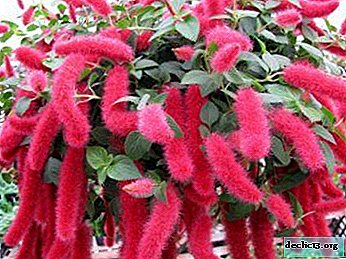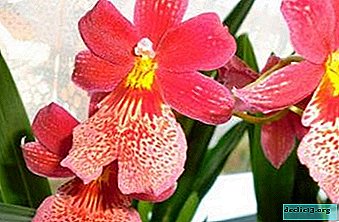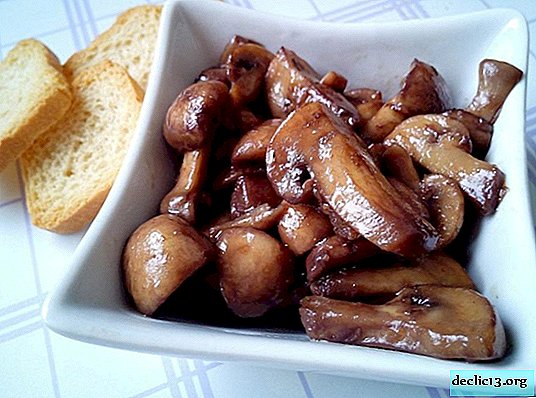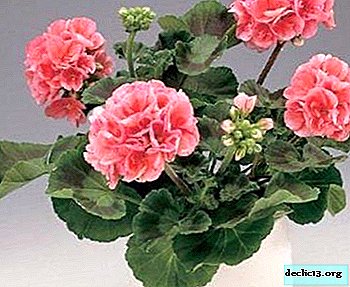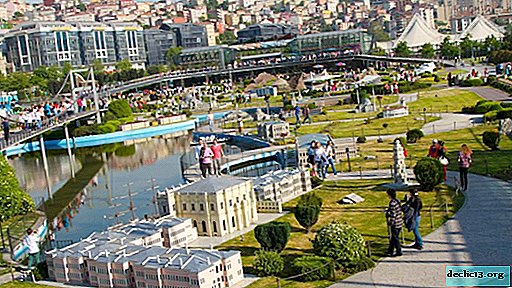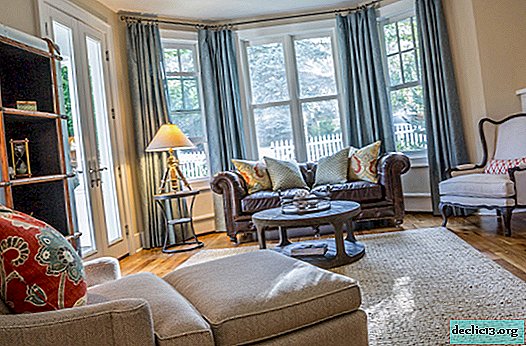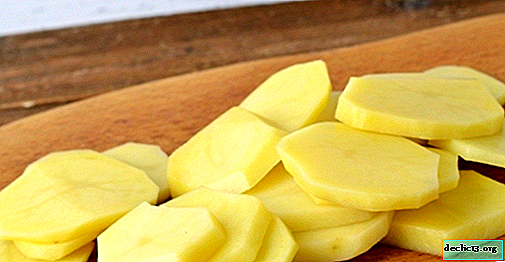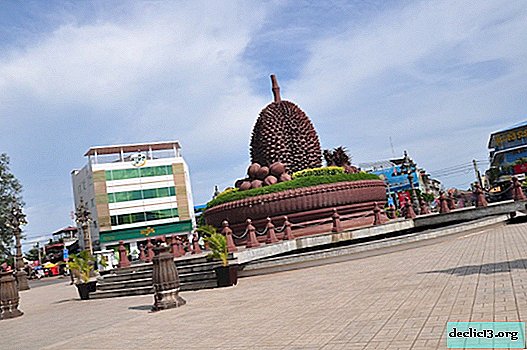Description of Schlippenbach's rhododendron - its medicinal properties and care tips

When arranging any personal plot, naturally, attention is always paid to bright beautiful accents. After all, I want to not only have useful plants at home, but also just beautiful ones that you can watch and enjoy with pleasure. And such a unique plant as Rhododendron Schlippenbach combines both decorative and useful qualities, because it has healing properties.
In this article we will tell you how to care for this plant and how it is propagated, as well as provide visual photos of this shrub.
Brief definition
Schlippenbach's rhododendron - one of the most beautiful deciduous species. Widely distributed in natural conditions in Korea, China, in the south of Primorye in Russia.
Detailed description
This large shrub with beautiful flowers reaches a height of 2 meters. It has excellent winter hardiness, has a very spreading shape (the width of the bush is greater than its height).
- Leaves - collected at the ends of branches of 5 pieces, have the shape of an inverted egg, the color is green. In the fall, they become yellow - orange or red, the plant during this period is no less decorative than during flowering.
- Flowers - very large, bell-shaped, pale pink, collected in inflorescences of 4 pieces. The flowering period begins in May (before the leaves appear) and lasts about 3 weeks, at which time an unusually pleasant delicate aroma comes from the shrub.
- Fetus - oblong box with seeds, they ripen in July.
Photo
Below you can see a photo of Schlippenbach's rhododendron:




History of occurrence
This kind of Rhododendron was first discovered in 1854 in Korea by the naval officer of the Imperial Navy Alexander Schlippenbach, in whose honor he was named.
Healing properties
Schlippenbach's rhododendron, in addition to beauty, is also able to help. Its leaves and flowers contain a lot of vitamin C, tea from this rhododendron has a soothing and relaxing effect.
Important! It is also used to lower blood pressure, as an antipyretic and analgesic.What is the difference from the rest of the species
This species of Rhododendron stands out among the others in the unusual shape of its leaves, as well as the fact that its beautiful large flowers smell very nice.
Bloom
- When and how - flowering usually begins in May (sometimes it can start at the end of April) and ends in June. Flowers begin to blossom before the leaves, the bush looks incredibly gentle - all in pink flowers, and even exudes a delicate aroma.
- Care before and after flowering - The main points of caring for Schlippenbach's Rhododendron before flowering: you need to monitor the soil moisture (which should be acidic), provide it with shading from the sun and protection from drafts. After flowering, be sure to remove the faded flowers and continue to maintain the desired soil moisture.
- What to do if it does not bloom - it is best to transplant, and you can transplant it at any time, most importantly - with a whole clod of earth, do not expose the roots. The newly selected location must necessarily be acidic or slightly acidic.
Use in garden design
Miraculously fits into the design of playgrounds, parks, squares, and private gardens. It has high decorativeness at any time, so designers are very fond of this plant. Schlippenbach's rhododendron goes well with any conifers, barberries, ferns, hosts. You can drop it along the fence or track, you can plant contrasting colors next to the Rhododendrons, everywhere it looks advantageous.
Step-by-step care instructions
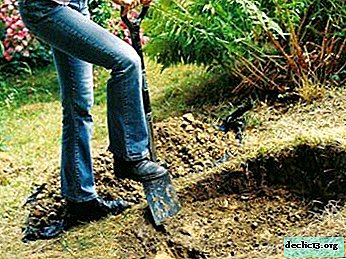 Choosing a landing place - the best option for him would be a place near any body of water - a pool or a pond, then you do not have to worry about maintaining the right humidity. You also need to consider that the shrub will feel good in partial shade - it needs diffused light. It is important to reliably protect it from strong winds so that it does not end up in a draft.
Choosing a landing place - the best option for him would be a place near any body of water - a pool or a pond, then you do not have to worry about maintaining the right humidity. You also need to consider that the shrub will feel good in partial shade - it needs diffused light. It is important to reliably protect it from strong winds so that it does not end up in a draft.
You can not plant Rhododendron next to oak, birch and willow, they will oppress each other.- What should be the soil - it should be slightly acidic or acidic and loose, then the shrub will successfully develop and bloom profusely. In its composition must be mandatory - peat, humus, sand, turf land.
- Landing - In the spring, planting a plant, of course, is always more reliable.
- First, the seedling must be placed in some container with warm water.
- Then we begin to prepare the landing pit. We dig it out twice as large as its root system.
- First we fill it with drainage, then you can add a little pine needles, then already prepared soil (from peat, sand, humus and sod land).
- We take out the soaked seedling from the water, let the water drain a little and then plant it in a prepared place.
- After planting, be sure to water well.
- When water is absorbed, we make a near-stem circle on top and pour a layer of pine bark (or needles).
- Temperature - able to withstand 26 degrees of frost and 30 degrees of heat, but best of all, this handsome man feels in the temperature range from minus 10 to plus 20 degrees.
- Watering - since the soil should always be in a semi-moist state, good watering is needed. In hot weather, it is possible to water 2 or 3 times a week - you need to look at the weather. A mandatory requirement for water - it should be soft, and best of all rain, it is also useful to periodically use acidified water for irrigation.
- Top dressing - the plant must be fertilized, at least 2 to 3 times a season. For the first time after winter, we make top dressing in early April, then in the summer, after flowering ends in the fall (September - October).Reference! Top dressing can be organic (peat plus humus) or special mineral complex (for Rhododendrons).
- Pruning - it is possible to carry out a small pruning in March - April, remove all the branches affected during the winter and, if you really want to, slightly correct the shape of the bush (although it always looks so chic). You should not get carried away with pruning so as not to weaken the plant.
- Transfer - it is possible to transplant in the spring and in the summer (it is undesirable in the fall). In the process of transplanting the earthen lump, try not to disturb, then the whole process of adaptation in the new place will be easier. After the Rhododendron has already been transplanted, you need to abundantly water and mulch the trunk circle.
How to propagate?
Schlippenbach's rhododendron is successfully propagated by seeds, layering and cuttings.
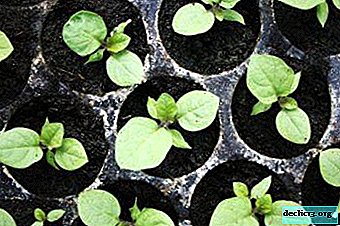 Seeds - often use this method, because the seeds have a very good germination. Seeds ripen in July - you can immediately start growing.
Seeds - often use this method, because the seeds have a very good germination. Seeds ripen in July - you can immediately start growing.- They are sown in moist loose (acidic) soil, the container is tightened with a film on top or covered with glass and at the temperature of 20-24 degrees they are waiting for seedlings. They appear in about 2 to 6 weeks.
- After the formation of these leaves, the seedlings are transplanted into pots and put in a cool place.
- In spring (in the second half of April) they can be planted in a permanent place in the garden.
- Cuttings - cut the apical shoots (approximately 15 cm), place under the film. You can plant in the ground after a year.
- Layering - after flowering (in June - July), a branch is dug up and constantly watered. By autumn, its own root system will already be formed there, but it is better to separate and transplant a new plant separately in the spring.
Diseases and Pests
Attention! Due to some mistakes in the care of Rhododendron, Schlippenbach may turn yellow leaves, get sick with chlorosis or mosaic - urgently adjust the watering and feeding.Also harmful insects may appear that can weaken the plant:
- spider mite - treated with Actellic;
- false shield - handle with “Aktara”;
- tobacco thrips - Fufanon will help.
Prevention of various problems
In order to prevent some problems it is necessary to spray the bush with any copper-containing preparations before flowering and after flowering. Also in spring, you can treat Bordeaux liquid and periodically arrange sprinkling with a hose (especially if it has not rained for a long time). All this will protect against the invasion of pests.
Conclusion
Nature does not cease to amaze us, because this is the best creator. So many beautiful and healthy plants exist around us, and at the same time there is always something new. Schlippenbach’s rhododendron, of course, is not a “new” plant, but for many, getting to know it was a pleasant discovery. He simply conquers at first sight with his tenderness and fragrance, and is unpretentious in leaving, so you can safely grow it on your site and admire its beauty.

 Choosing a landing place - the best option for him would be a place near any body of water - a pool or a pond, then you do not have to worry about maintaining the right humidity. You also need to consider that the shrub will feel good in partial shade - it needs diffused light. It is important to reliably protect it from strong winds so that it does not end up in a draft.
Choosing a landing place - the best option for him would be a place near any body of water - a pool or a pond, then you do not have to worry about maintaining the right humidity. You also need to consider that the shrub will feel good in partial shade - it needs diffused light. It is important to reliably protect it from strong winds so that it does not end up in a draft. Seeds - often use this method, because the seeds have a very good germination. Seeds ripen in July - you can immediately start growing.
Seeds - often use this method, because the seeds have a very good germination. Seeds ripen in July - you can immediately start growing.